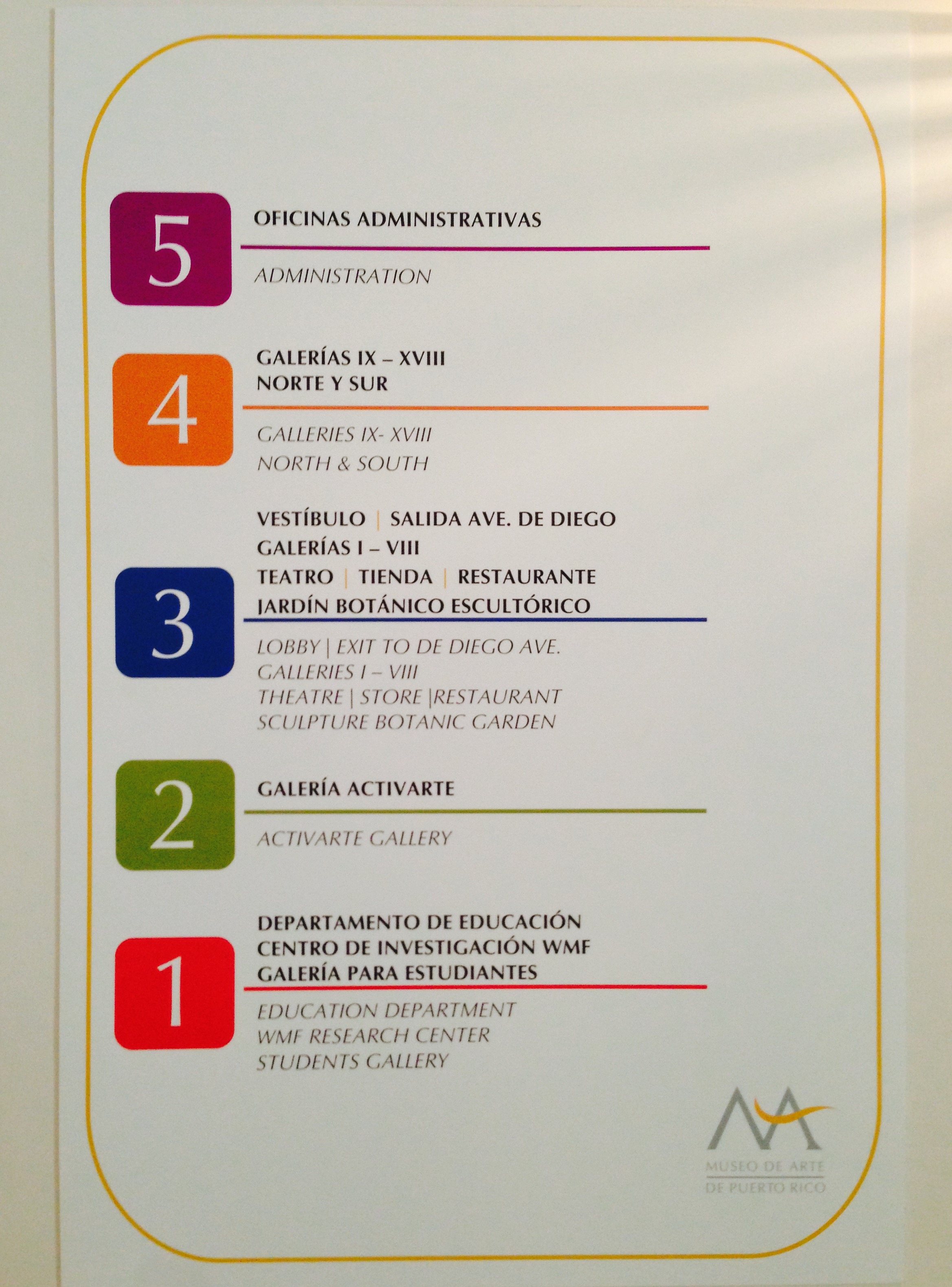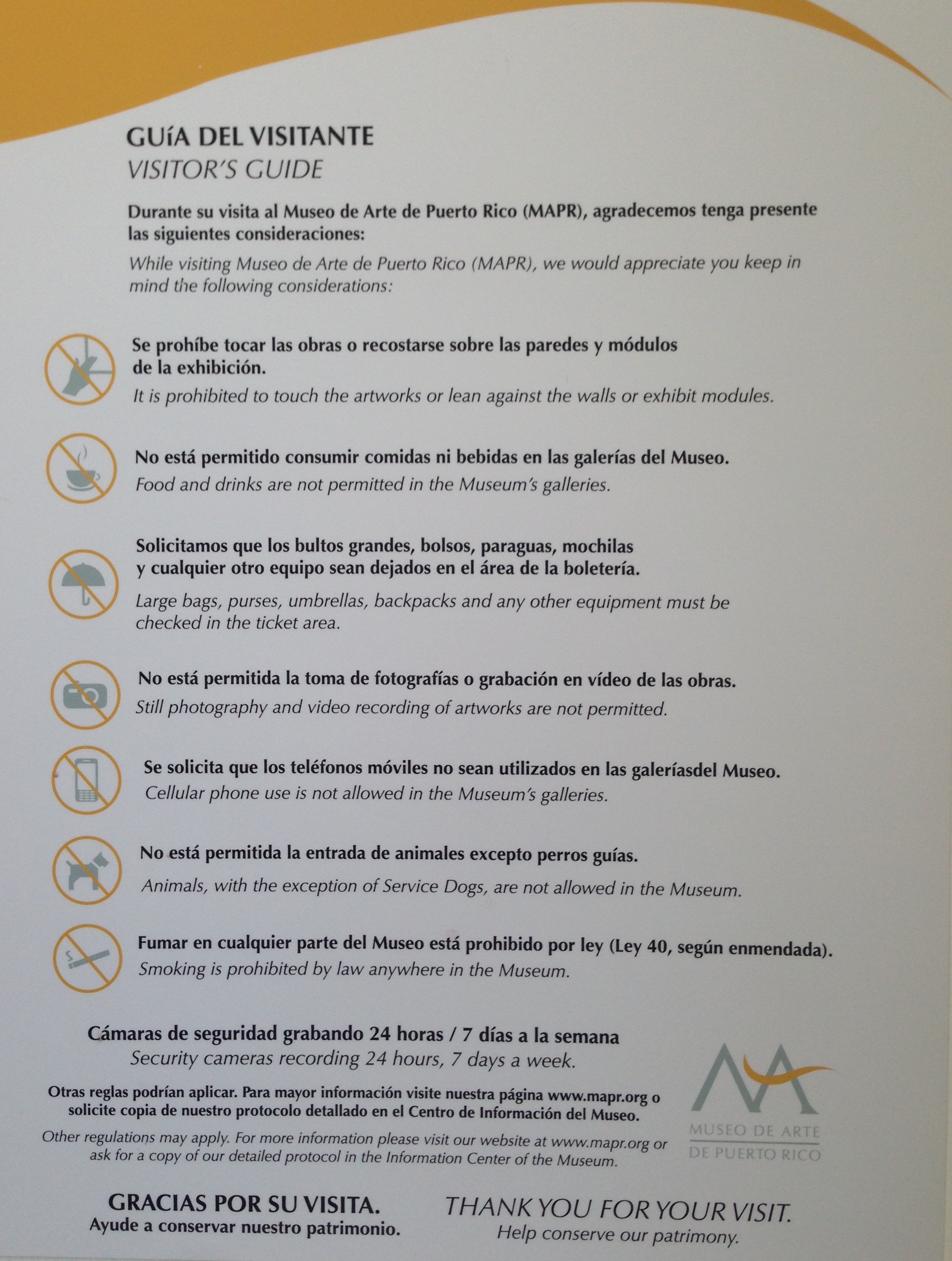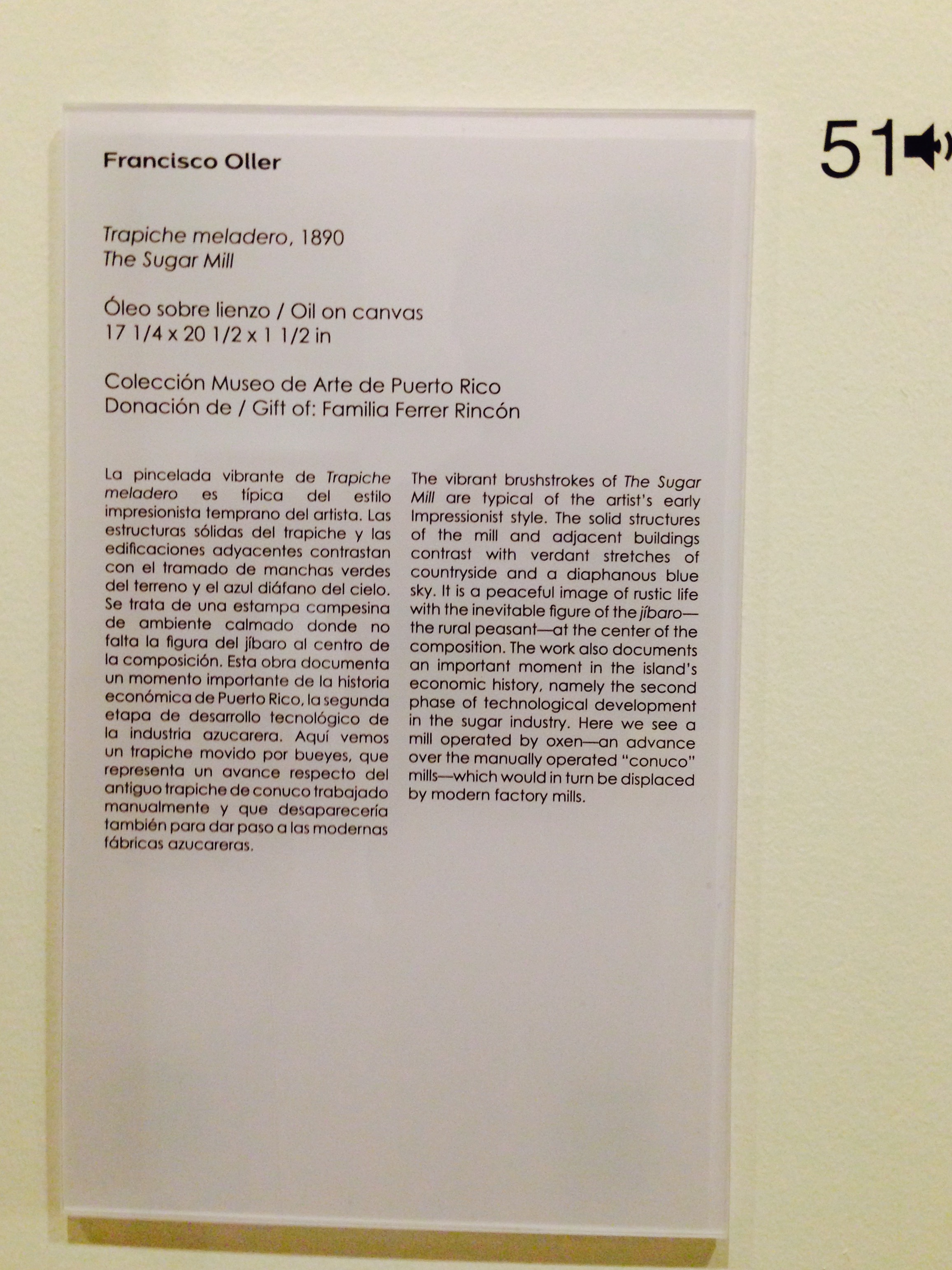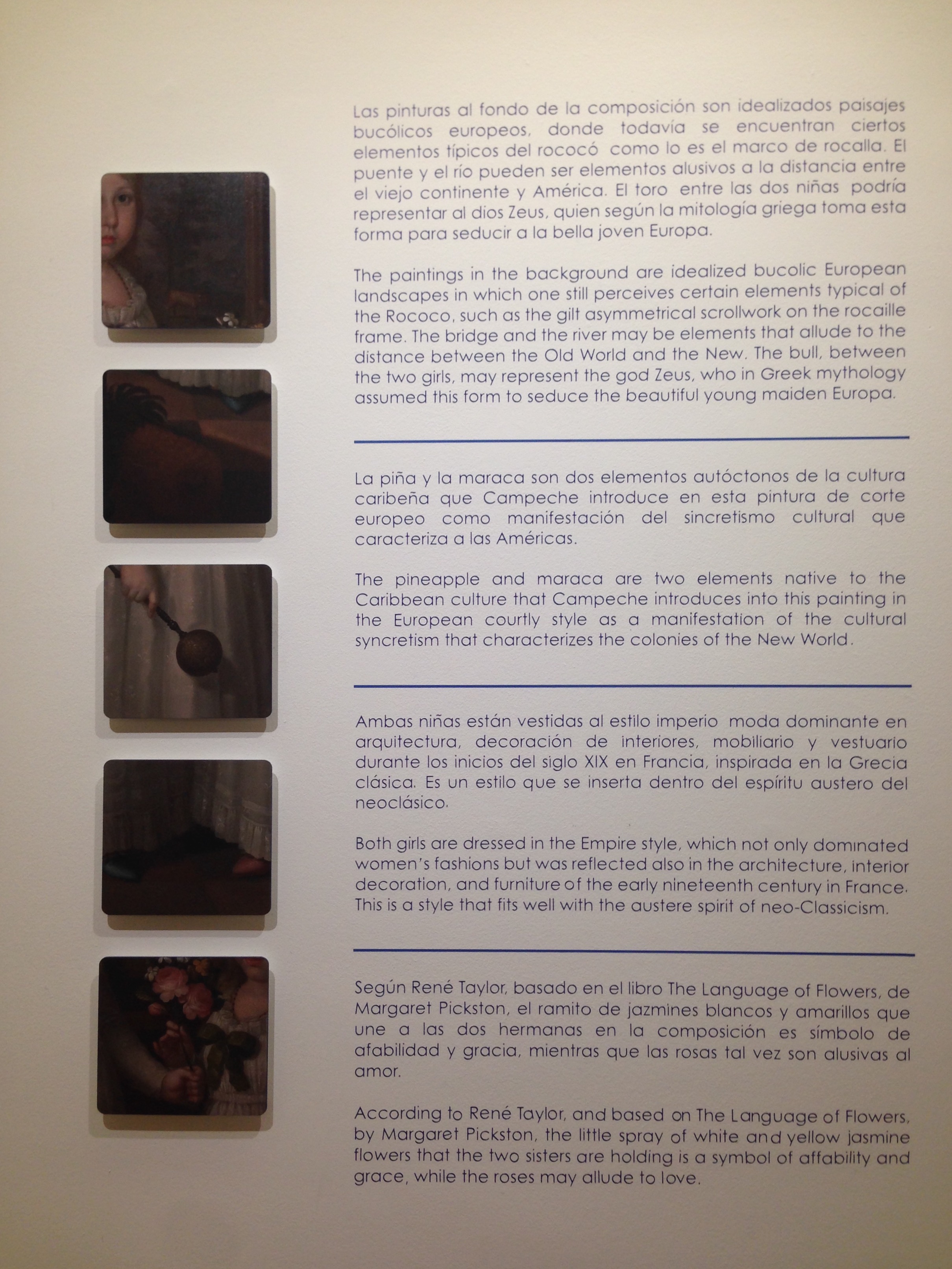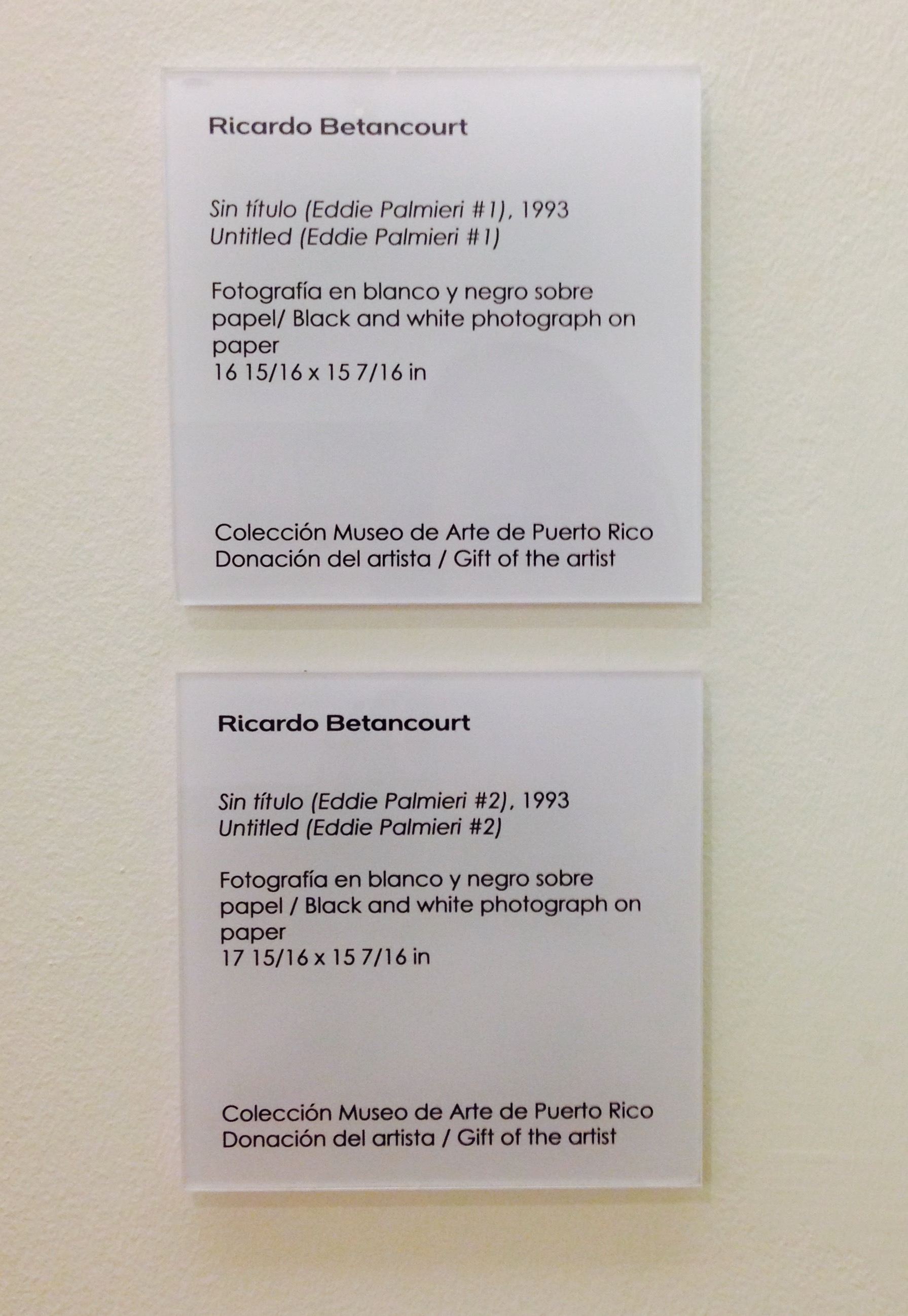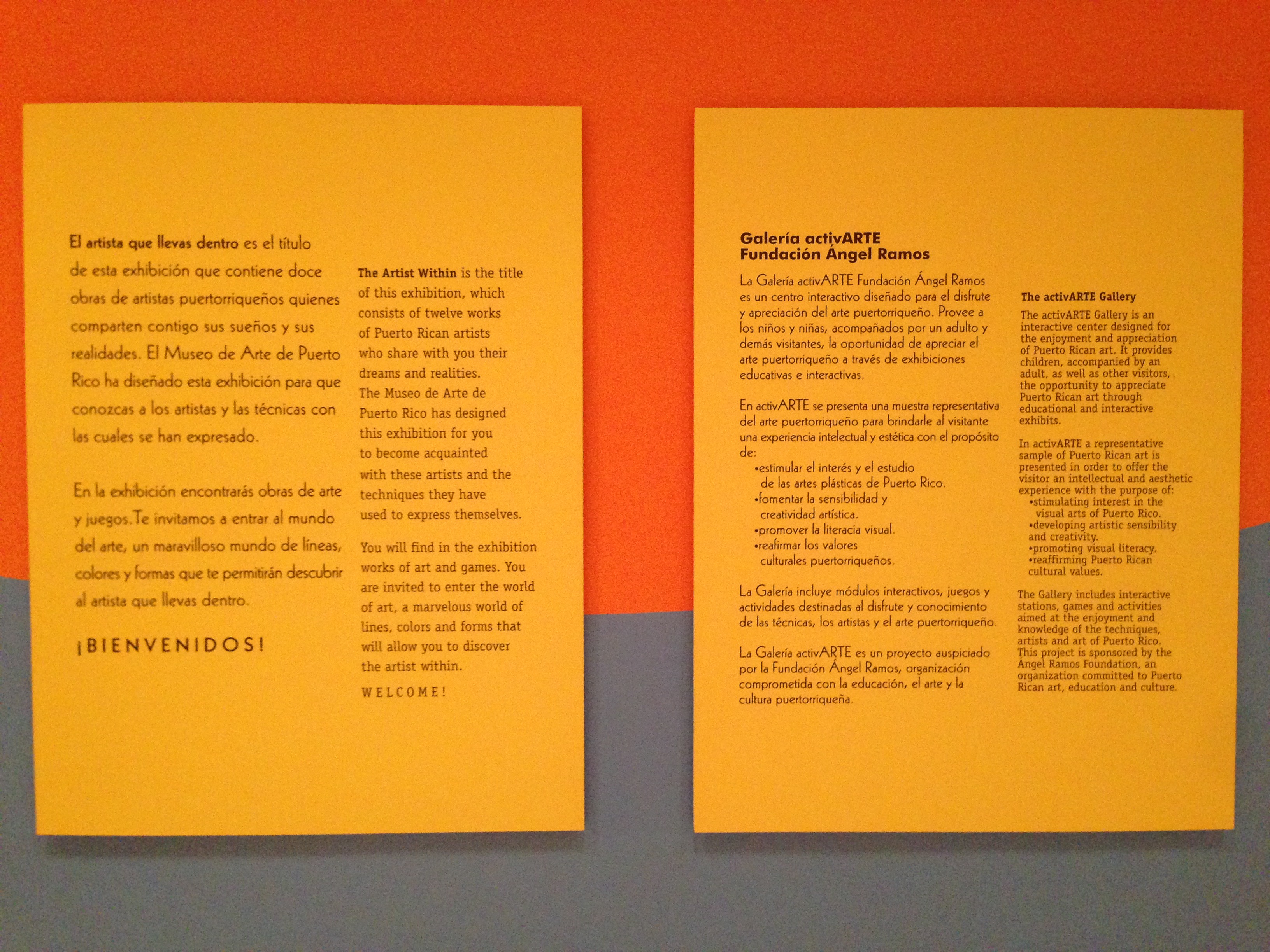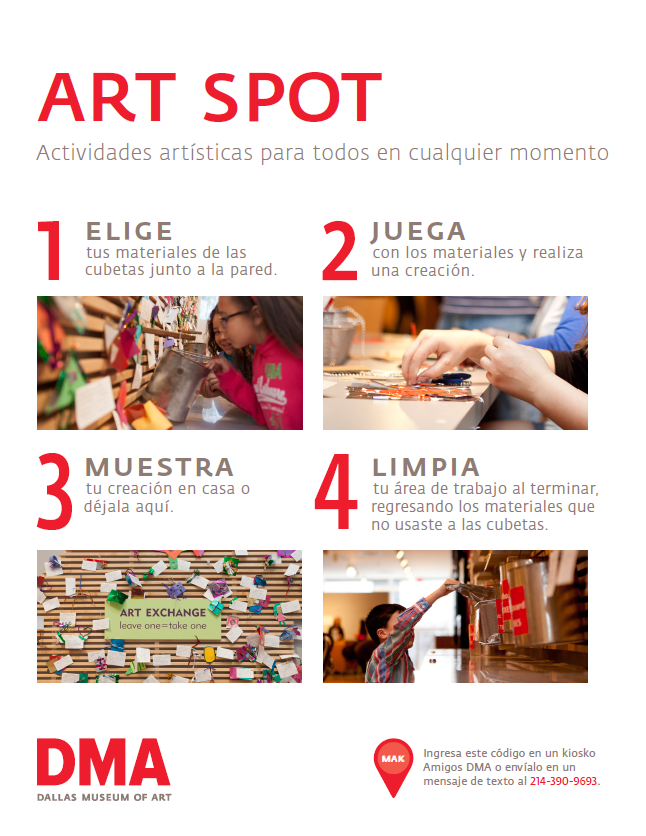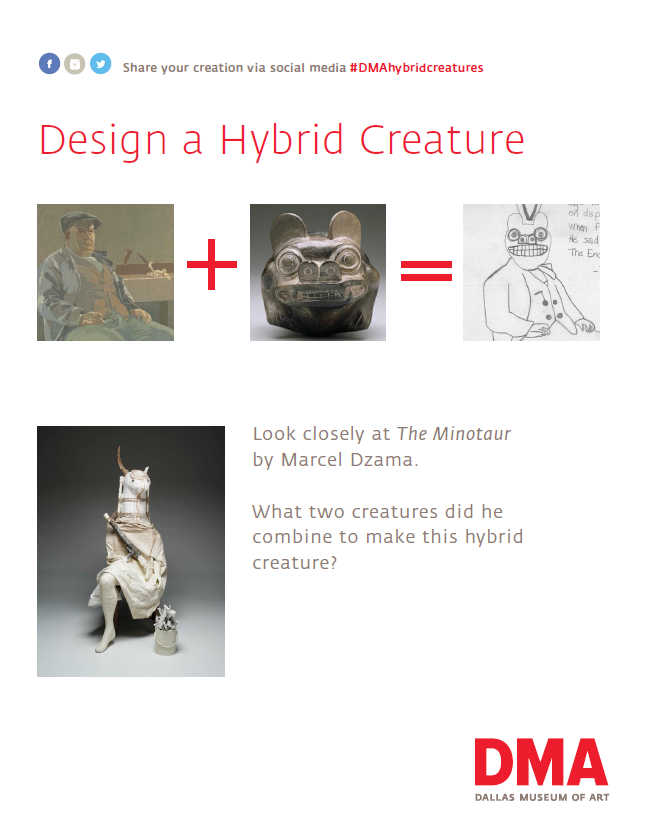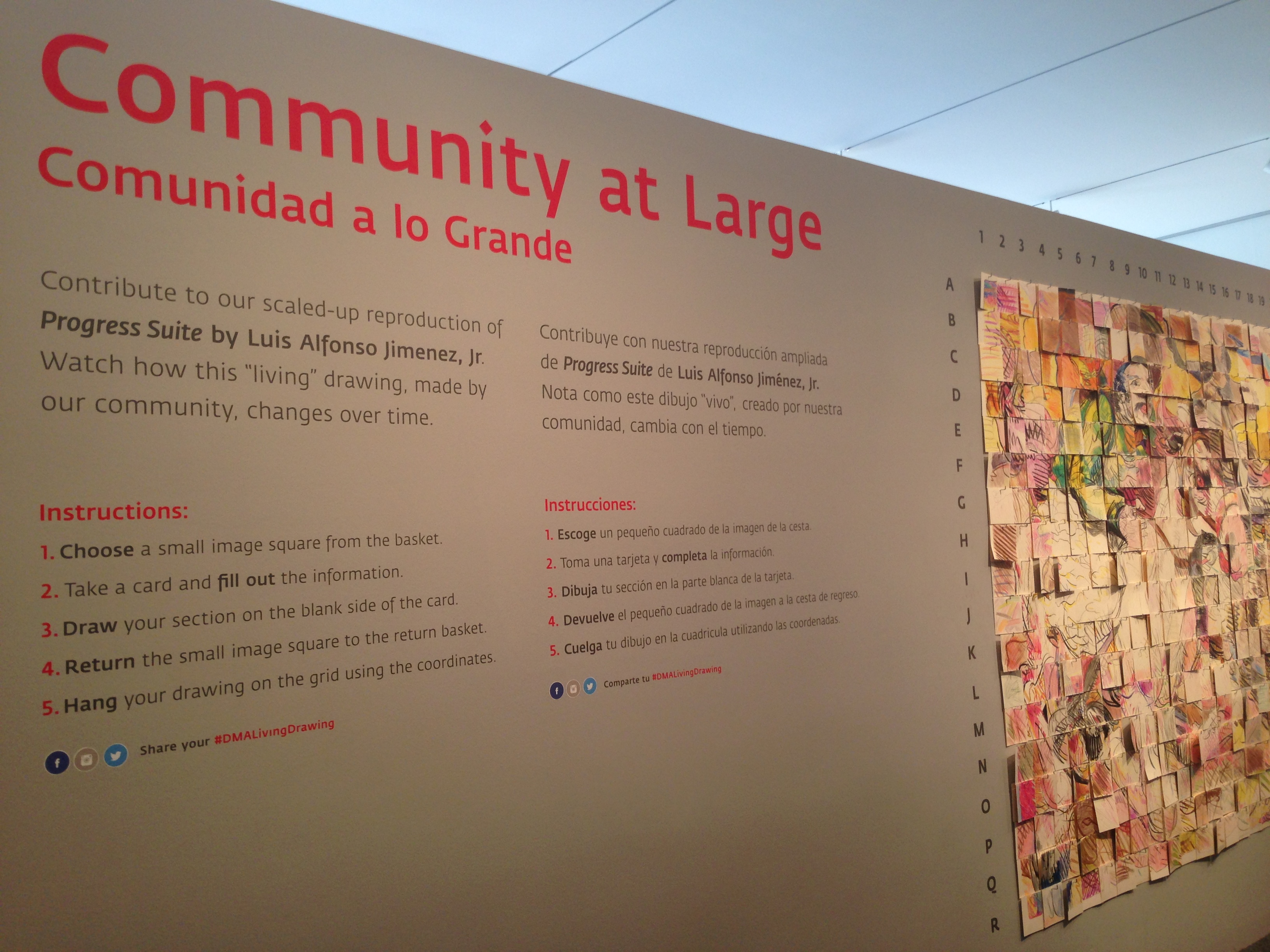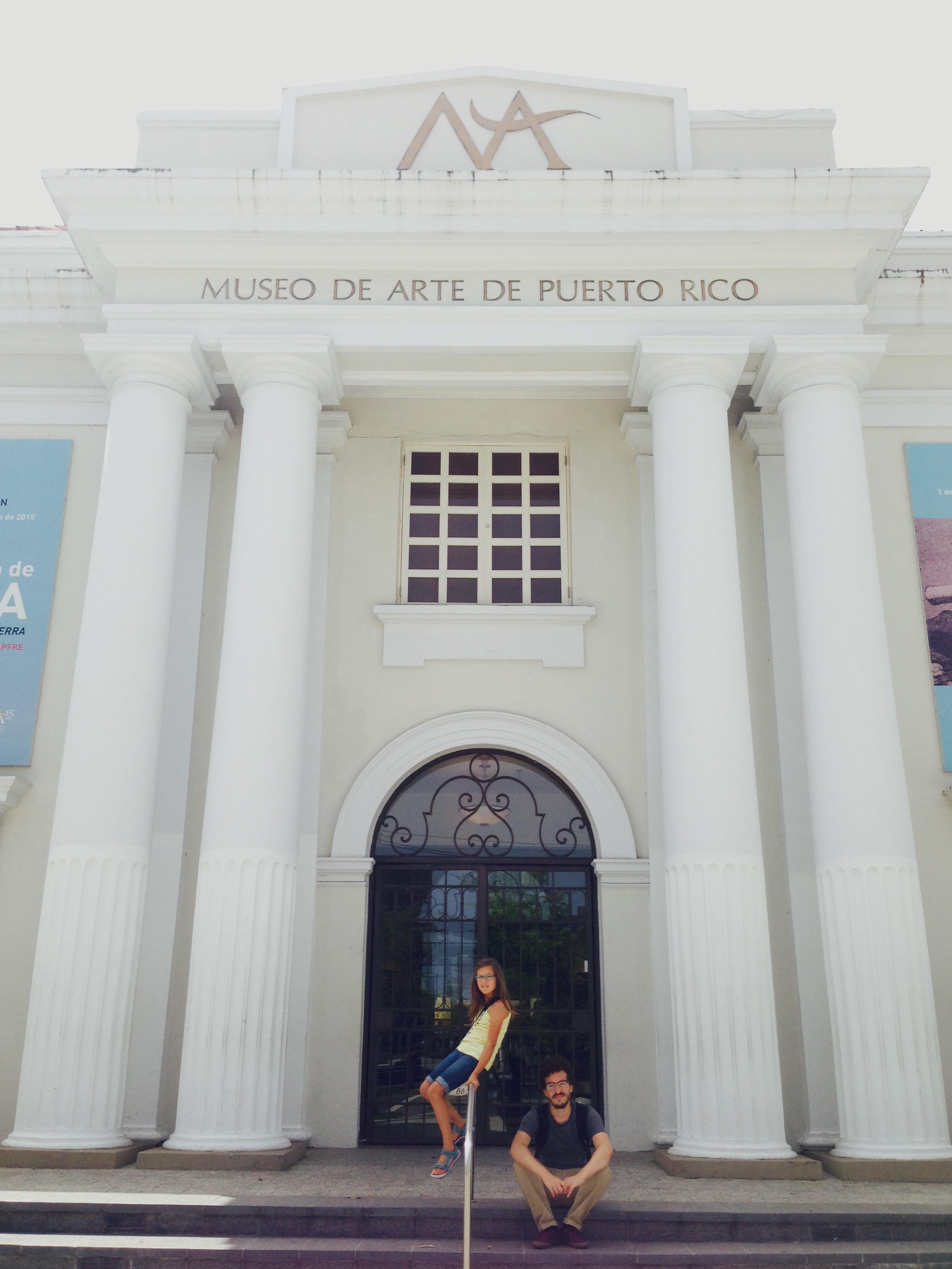 Last week, while vacationing in San Juan with my family, we stopped by the Museo de Arte de Puerto Rico. When I travel to a new city, I always like to visit the museums to see their collections and learn about their educational initiatives. Puerto Rico is a US Territory, but it’s quite a different place than any of the fifty states. Though my family is bilingual, I’m a non-Spanish speaker, so I was pleased to learn that Puerto Rico is bilingual. Many residents speak both Spanish and English and, to my delight, all of the museum signage was bilingual! As a museum educator who has been involved in making signage more accessible, it was amazing to walk in and find that everything from the museum map to the artwork labels were in both Spanish and English. (Click on the images below to enlarge.)
Last week, while vacationing in San Juan with my family, we stopped by the Museo de Arte de Puerto Rico. When I travel to a new city, I always like to visit the museums to see their collections and learn about their educational initiatives. Puerto Rico is a US Territory, but it’s quite a different place than any of the fifty states. Though my family is bilingual, I’m a non-Spanish speaker, so I was pleased to learn that Puerto Rico is bilingual. Many residents speak both Spanish and English and, to my delight, all of the museum signage was bilingual! As a museum educator who has been involved in making signage more accessible, it was amazing to walk in and find that everything from the museum map to the artwork labels were in both Spanish and English. (Click on the images below to enlarge.)
Last year Steve Yalowitz wrote a guest post on Nina Simon’s blog about the significance of bilingual signage. As co-author of the Bilingual Exhibit Research Initiative, which strove to better understand bilingual labels from the visitor perspective, Yalowitz offered these three points as significant findings:
-
Code-switching – We found lots of evidence of effortless switching back-and-forth between English and Spanish….The power of bilingual text is that it’s bilingual – it provides access in two languages, and code switching lets you understand and express yourself from two different perspectives, with two sets of vocabulary.
-
Facilitation – We researched intergenerational groups, so it’s not surprising that many of the adults saw their role as facilitator as essential to their own and the group’s success in the exhibition….With Spanish labels available, adults were able to facilitate, guiding the conversations and interactions, showing their children, grandchildren, nieces and nephews where to focus and how to interact. Adults who were previously dependent on their children could now take the lead as confident facilitators.
-
Emotional reaction – This study found that the presence of bilingual interpretation had a profound emotional effect on the groups. Groups said they enjoyed the visit more, felt more valued by the institution, and many said having bilingual interpretation changed how they felt about the institution.
When I read Yalowitz’s article last year, it opened my eyes to the experiences of non-English speakers in museums with English only text. But the experience was made even more tangible as an English speaker visiting the Museo de Arte de Puerto Rico. Had the text only been in Spanish, I would have had to ask my daughter or significant other to translate for me. This would not have been impossible, but rather inconvenient. If I stopped to look closely at a work of art that they were not interested in, I would have to call them back and interrupt their experience to get assistance understanding the label. Having bilingual text allowed me to take on the role of facilitator, reading the label and prompting my daughter with questions, and allowed my family to switch between Spanish and English comfortably. Furthermore, going beyond bilingual label text and providing bilingual directional signage was significant as well: we were each able to easily and equally participate in the entire museum experience.
Over the last few years, the Center for Creative Connections (C3) has begun to incorporate bilingual text and voices in a variety of ways. This initiative began soon after the DMA moved to free general admission. With this change in our admission policy, our overall number of visitors and the diversity of those visitors increased. The need for accessible signage for Spanish speakers was apparent, so in late 2012 we started to test out the use of bilingual prompts at the C3 Art Spot.
This was the perfect place to start because it is one of the busiest spaces in the Center for Creative Connections. It was also easy to begin using bilingual text in these kinds of prompts because these signs typically change more often and are easier to alter than more permanent wall signage. In 2014, we began to use bilingual activity prompts in the main C3 Gallery as well. This is a prompt for an activity where visitors use a light box and reproductions of works of art from the Museum’s collection to create hybrid creatures.
These small steps have been leading up to a bigger change. This year when we installed our Community at LARGE project, both English and Spanish text was included not only in the table prompt, but also on the wall text.
As we continue to install new works of art in the Center for Creative Connections, our hope is to integrate bilingual text throughout the space.
Jessica Fuentes
C3 Gallery Manager
